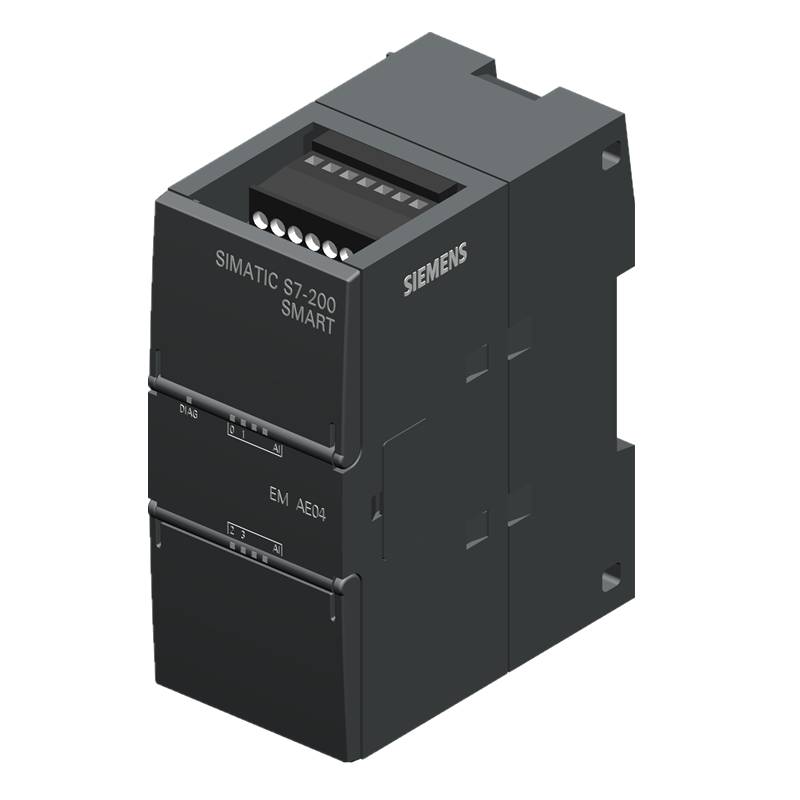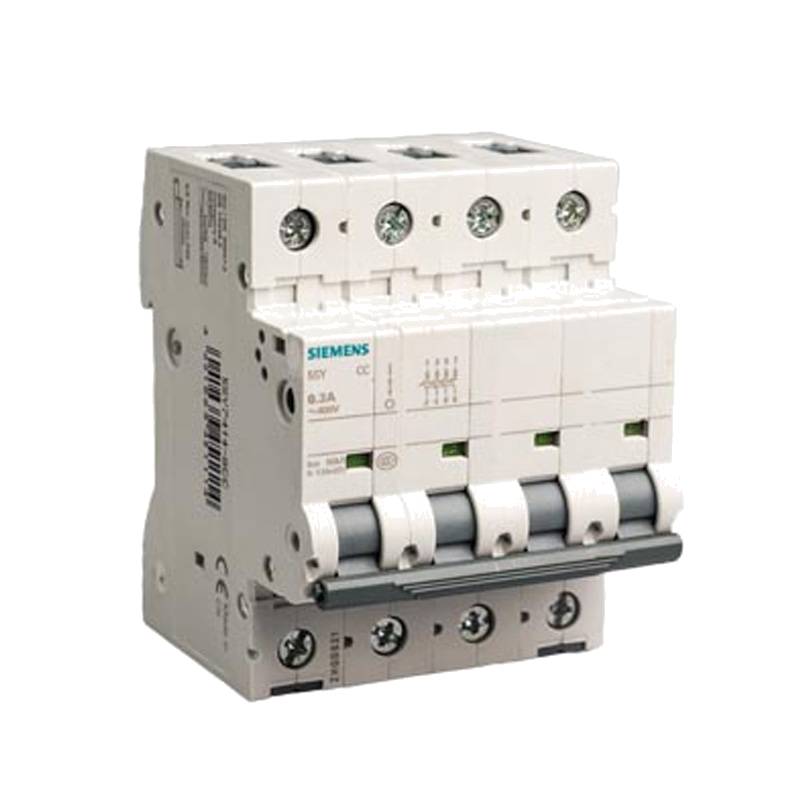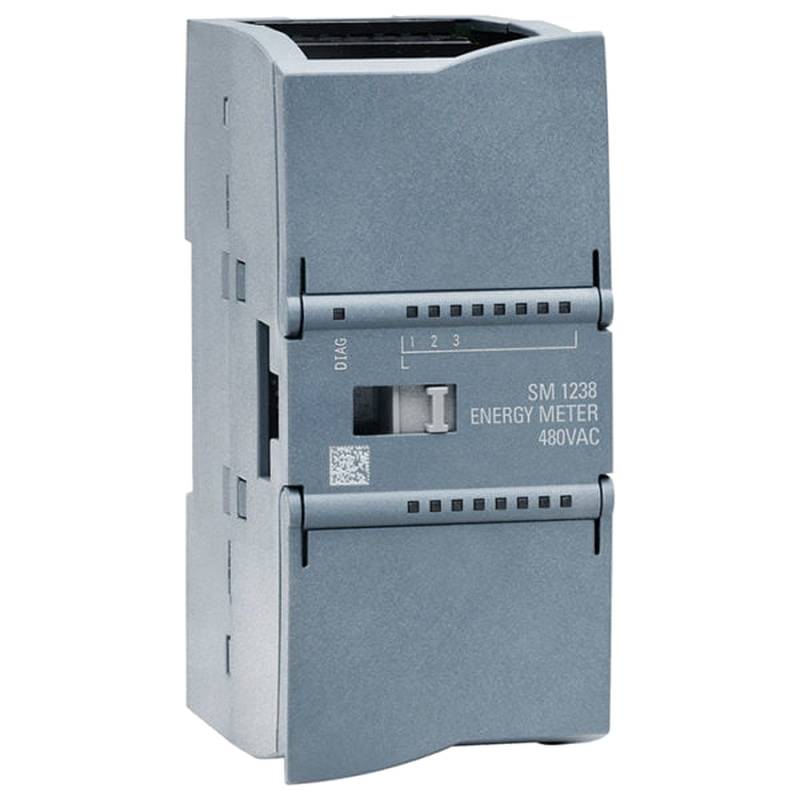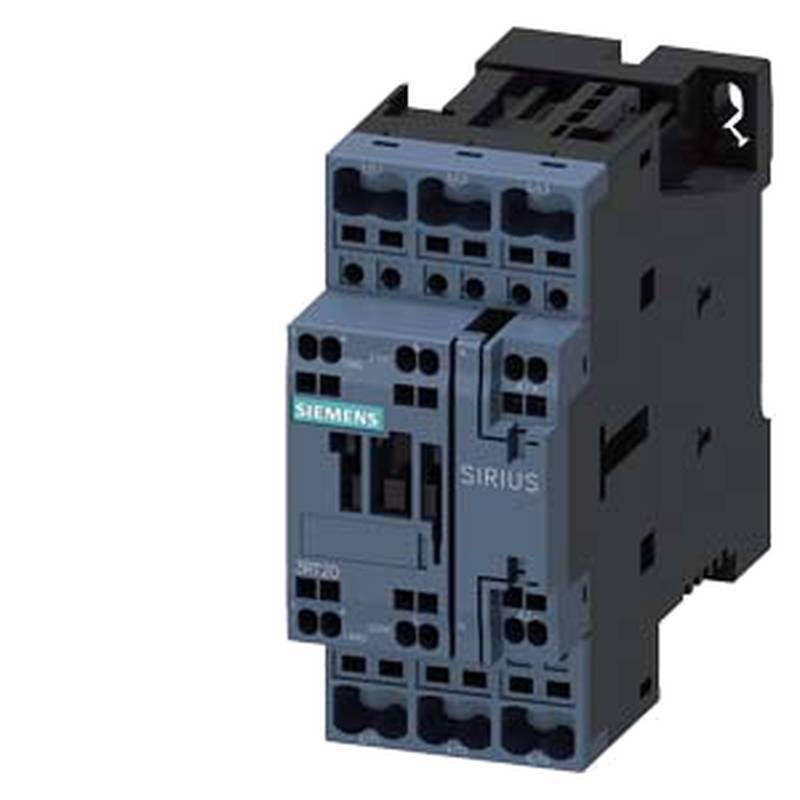
The Siemens 5SY6220-7CC Miniature Circuit Breaker (MCB) for Equipment Protection stands as a robust solution for safeguarding sensitive electrical equipment. This 2-pole, 20-amp breaker offers superior overcurrent and short-circuit protection, crucial for maintaining operational integrity in diverse industrial and commercial settings. Its high breaking capacity and reliable tripping characteristics ensure swift disconnection, minimizing damage and downtime. The 5SY6220-7CC is engineered for ease of installation and integration within standard electrical distribution systems, making it a preferred choice for system designers and maintenance professionals. Key technical parameters include a rated voltage of 230/400V AC, a tripping curve type C, and an ambient temperature range of -25°C to +45°C, underscoring its versatility and dependable performance under demanding conditions.
Product Specifications
| Specification | Value |
| :--------------------- | :------------------------- |
| Product Type | Miniature Circuit Breaker |
| Series | 5SY6 |
| Manufacturer | Siemens |
| Model Number | 5SY6220-7CC |
| Number of Poles | 2 |
| Rated Current (In) | 20 A |
| Rated Voltage (Ue) | 230/400 V AC |
| Tripping Curve | C |
| Breaking Capacity (Icn)| 6 kA |
| Frequency | 50/60 Hz |
| Insulation Voltage | 500 V |
| Degree of Protection | IP20 |
| Ambient Temperature | -25°C to +45°C |
| Mounting Type | DIN Rail |
| Terminal Type | Screw Terminals |
| Compliance Standards | IEC/EN 60898-1 |
Core Features & Market Positioning
The Siemens 5SY6220-7CC excels in its market segment due to its robust construction and Siemens' established reputation for quality and reliability in electrical protection. Its Type C tripping characteristic is particularly advantageous for applications with moderate inrush currents, such as motors or transformers, providing sensitive protection without nuisance tripping. This differentiates it from breakers with faster tripping curves that might react unnecessarily to normal operational surges. The 6 kA breaking capacity offers a significant level of safety, adequate for most standard distribution board installations in commercial and light industrial environments, positioning it as a dependable, cost-effective solution for equipment protection. Its compact design also contributes to space savings within control panels and distribution boxes.
Key Application Scenarios
This 20A, 2-pole MCB is ideally suited for protecting individual circuits and equipment in a variety of settings. Common applications include safeguarding lighting circuits, small motor loads, control transformers, and general-purpose outlets in commercial buildings. In industrial settings, it is frequently employed for protecting control panels, auxiliary equipment, and smaller machinery where precise overcurrent protection is paramount. Its versatility also extends to residential applications requiring robust protection for specific appliances or sub-circuits. The Siemens 5SY6220-7CC is a go-to component for electricians and panel builders needing reliable, code-compliant circuit protection.
Practical System Integration Guidance
Integrating the Siemens 5SY6220-7CC into existing electrical systems is straightforward, thanks to its standard DIN rail mounting and screw terminal connections. Ensure the circuit is de-energized before installation. Connect the line conductor to the upper terminal and the load conductor to the lower terminal, observing correct polarity. For 2-pole operation, both terminals are utilized for power switching and protection. Ample space should be left around the breaker for adequate ventilation, and the ambient temperature should remain within the specified operational limits. Proper torque should be applied to the screw terminals to ensure a secure connection and prevent overheating.
Operation and Risk Mitigation
The Siemens 5SY6220-7CC operates by monitoring the current flow. If the current exceeds a predetermined level for a specified duration (defined by the Type C curve), the internal mechanism trips, opening the circuit and interrupting power flow. This action prevents damage to connected equipment caused by overloads or short circuits. To mitigate risks, always ensure the breaker is correctly rated for the circuit load and fault current levels. Regular inspection of terminals for tightness and signs of overheating is recommended. In case of repeated tripping, a thorough investigation of the circuit and connected load is necessary to identify the root cause, rather than simply replacing the breaker.
Scalability & Long-Term Value
While the Siemens 5SY6220-7CC is a standalone protective device, its value extends through its compatibility with the broader Siemens industrial control and automation ecosystem. It seamlessly integrates into standard electrical panels and can be part of larger Siemens-based control systems. For future upgrades or expansion, its consistent design and adherence to international standards ensure that it can be readily replaced or complemented by other Siemens products, including those with advanced communication capabilities, should the need arise for a more digitized IIoT-integrated solution. This backward compatibility and adherence to standards offer long-term investment protection.
Frequently Asked Questions
What is the breaking capacity of the Siemens 5SY6220-7CC?
The Siemens 5SY6220-7CC boasts a breaking capacity of 6 kA. This rating signifies its ability to safely interrupt fault currents up to this level without sustaining damage. It's a crucial parameter for ensuring personnel safety and preventing electrical fires in the event of severe short circuits. This capacity is suitable for most standard residential and commercial installations.
What does a "Type C" tripping curve mean for this MCB?
A Type C tripping curve indicates that the breaker will trip when the current reaches 5 to 10 times its rated current. This characteristic makes it ideal for circuits with moderate inductive loads, such as small motors or transformers. It provides sensitivity to short circuits while tolerating the temporary inrush currents these loads can draw upon startup.
How do I properly install the Siemens 5SY6220-7CC MCB?
Installation requires de-energizing the circuit first for safety. Mount the MCB onto a standard 35mm DIN rail by snapping it into place. Connect the incoming power (line) to the upper terminal and the outgoing power to the load (load) to the lower terminal. Ensure secure connections by tightening the screw terminals appropriately, avoiding over-tightening.
Can this MCB be used for DC circuits?
The Siemens 5SY6220-7CC is primarily designed and rated for AC circuits, specifically up to 400V AC. Using it on DC circuits is not recommended and can lead to unsafe operation and failure. DC circuits have different arc extinguishing properties, and AC breakers are not built to handle them reliably. Always use DC-rated breakers for DC applications.
What is the operating temperature range for the 5SY6220-7CC?
This MCB is designed to operate reliably within an ambient temperature range of -25°C to +45°C. Operating outside this range can affect its performance and lifespan. Extreme cold might make mechanical parts stiff, while excessive heat can lead to premature tripping or reduced breaking capacity. Ensure adequate ventilation.
Why would a Siemens 5SY6220-7CC trip unnecessarily?
Unnecessary tripping, often called nuisance tripping, usually stems from an overload condition that's close to the breaker's limit or a temporary inrush current exceeding the Type C threshold. Check for newly added high-draw appliances on the same circuit or a slightly undersized breaker for the load. A faulty breaker is also possible but less common.
What is the significance of the 2-pole design?
A 2-pole design means the breaker disconnects both the live and neutral conductors simultaneously. This is crucial for safety, especially in circuits where the neutral conductor might carry current even when the live is off. It ensures complete isolation of the circuit from the power source, preventing potential shock hazards.
How does the 6 kA breaking capacity compare to other MCBs?
A 6 kA breaking capacity is considered standard for many residential and commercial applications. Higher breaking capacities, such as 10 kA or 15 kA, are typically required for industrial facilities with higher fault current potential. The 6 kA rating of the 5SY6220-7CC is sufficient for typical distribution boards connected to a standard utility supply.
What standards does the Siemens 5SY6220-7CC comply with?
This MCB complies with international standards IEC/EN 60898-1. These standards define the requirements for electrical accessories, ensuring safety, performance, and interoperability. Compliance with these standards is essential for its use in certified electrical installations across many regions worldwide.
Is this MCB suitable for protecting sensitive electronic equipment?
Yes, the Siemens 5SY6220-7CC, with its reliable Type C tripping, offers good protection for equipment sensitive to overcurrents and short circuits. However, for extremely sensitive electronics requiring protection against voltage fluctuations or surges, additional surge protection devices might be necessary in conjunction with this MCB.






















